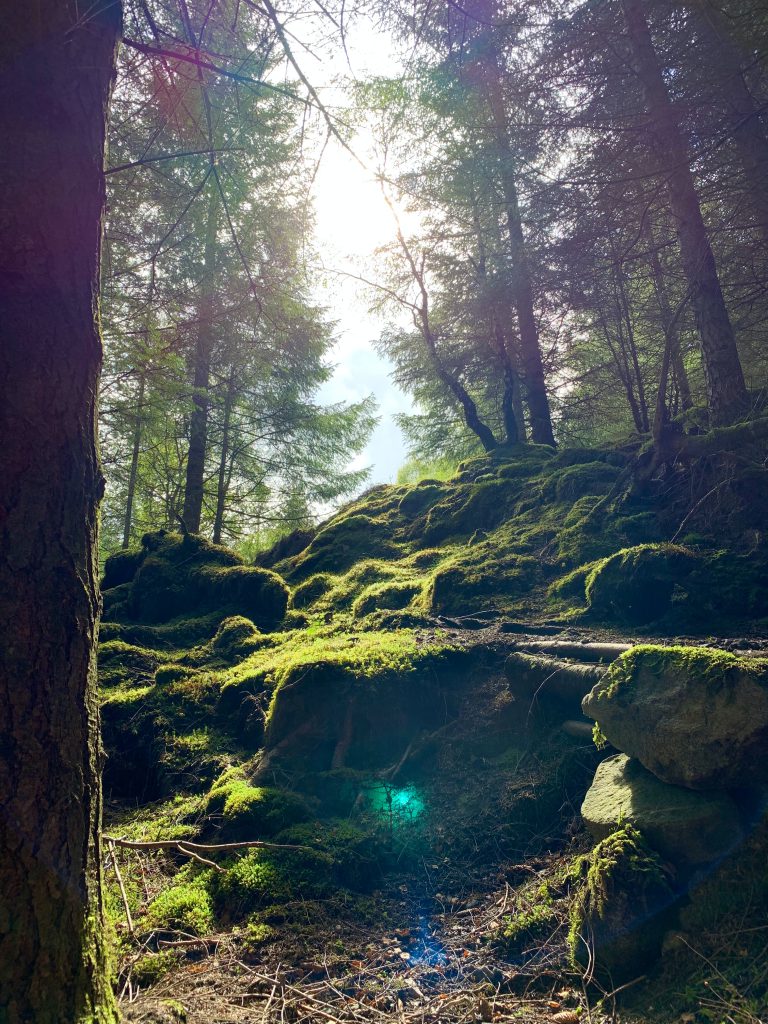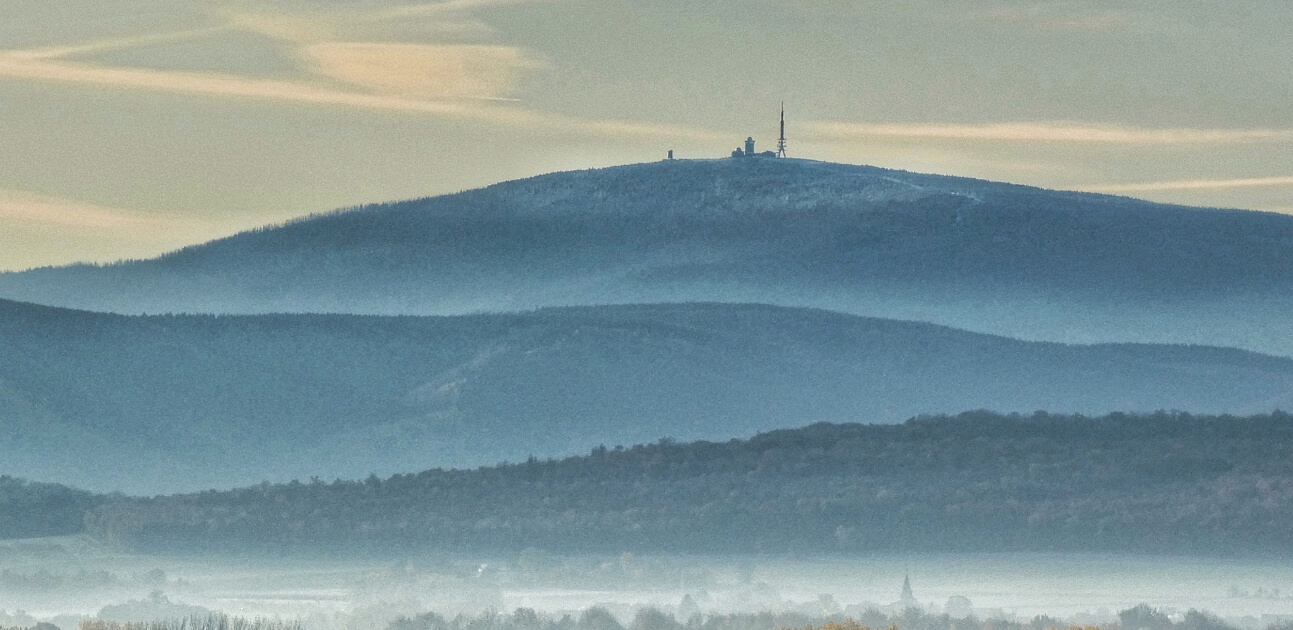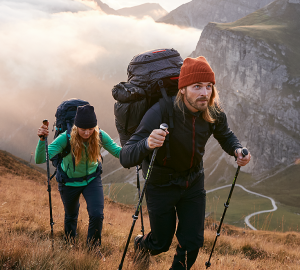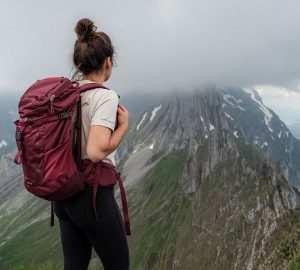The Harzer-Hexen-Stieg is the perfect hiking destination for the whole year. It leads through dark coniferous forests, past rocky cliffs and through the high moorland to the Brocken – the highest mountain in northern Germany, which is surrounded by many legends.
The Harzer-Hexen-Stieg is a legendary place in its own right. Whether hikers actually encounter witches and other fairy-tale characters there is a moot point. However, the Brocken, also known colloquially as Blocksberg, and the deep forests of the Harz have always inspired people’s imagination. According to popular belief, this is where the witches gather on Walpurgis night. Even for the first part of Goethe’s Faust, the highest mountain in northern Germany (1,141m) served as the setting.
Today, the Hexen-Stieg is well developed for hikers and the region is prepared for tourists. At the same time, a large part of the long-distance hiking trail leads through the Harz National Park. Nature conservation and gentle tourism are thus in the foreground. This makes the stay particularly pleasant and hiking enthusiasts can enjoy the untouched nature with its wild forests, bizarre rocks, clear torrents and millennia-old high moors.

The Route
The Hexen-Stieg leads from Osterode to Thale and offers 150 kilometers of hiking pleasure with all its variants. So you can plan a multi-day hiking tour for the entire trail, or make a day trip and get on somewhere in the middle of the trail.
If you walk the Hexen-Stieg as a whole, the shortest variant with crossing the Brocken measures 94 kilometers. If you go around the summit of the Brocken via St. Andreas and Braunlage, then 107 kilometers of hiking distance await you.
Also interesting: Long-distance hiking trails Germany – The most beautiful routes
Harzer-Hexen-Stieg: Stages
For a complete hike through the Harzer-Hexen-Stieg, the split into five daily stages has proven to be the best. However, the respective stages can be adapted to your own physical condition. And if you really like a place, you can of course take a break for a day.
Decisive for the arrangement is which variant you want to walk and whether you want to climb the summit of the Brocken or prefer to bypass it. The type of accommodation also plays a role: if you sleep in a tent, it’s best to plan your daily stages according to the local campsites. Wild camping is not allowed in Germany and especially in the national park there are severe penalties. Here you can find a list of campsites (only in German language). Otherwise, there are also numerous guesthouses along the route.
The Harzer Tourismusverband (Harz Tourism Association) has summarized the individual stages very clearly.
An example of your split of the Hexen-Stieg into five stages could look like this:
- Stage 1: Osterode – Buntenbock: 12 km
- Stage 2: Buntenbock – Torfhaus: 24 Km
- Stage 3: Torfhaus – Brocken – Königshütte: 25 km
- Stage 4: Königshütte – Altenbrak: 23 km
- Stage 5: Altenbrak – Thale: 13 km

Legendary Hiking Backpacks from Tatonka
At Tatonka you will find the right hiking backpack for your tour on the Harzer-Hexen-Stieg.
Well Signposted: Always Follow the Witches!
The Harzer-Hexen-Stieg is well signposted. At every fork in the road you will find one of the typical wooden signs with the header “Harzer-Hexen-Stieg”. In addition to the direction, the next intermediate destination and the number of kilometers to get there are usually indicated.
Within the national park, you will also find the logo of the Hexen-Stieg on the signs: a white witch in a green circle. So it is almost impossible to share the fate of Hensel and Gretel and stray from the path.

How to get to the Hexen-Stieg
Osterode and Thale, the start and end points of the Harzer-Hexen-Stieg, are both easy to reach by train. From there, the start of the hike is clearly marked in each case. There are also parking spaces for hikers along the route.
Along the way, there are also numerous stops for the region’s public buses. If you want to use them, you can find out about the routes and departure times on the railroad’s website.
If you want to return to the starting point after completing your hike, you can take the train between Osterode and Thale. This takes about four hours. However, there are also flat rates offered by local cab companies.
There are also package deals for hiking the Hexen-Stieg. If you decide on this all-round carefree option, you can enjoy the luxury of packed lunches, luggage transport and a return service in addition to overnight accommodation in a double room for hikes lasting several days.
Reading Tip: How to orient with map and compass
The best season
You can basically walk the Hexen-Stieg all year round. Only the small section through the Bordeschlucht between Treseburg and Thale is closed in the winter months because of snow and ice. Then, however, an alternative route is signposted. You can expect snow in the Harz Mountains from mid-October to the end of April.
The most beautiful and exciting times for a hike on the Hexen-Stieg are spring and fall, when nature lets its colors play and temperatures are moderate.
Equipment for the Hexen-Stieg
For walking the Hexen-Stieg you need good hiking shoes and weatherproof clothing. Hiking poles can also be helpful in steep places, but are not a must. Otherwise, pack your daypack as usual: Enough to drink, a snack for the way, your first aid kit and sufficient sun protection should not be missing.
Also ideal for families
Hiking on the Hexen-Stieg is also ideal for families. The route is not too demanding. Admittedly, there are sections with roots and now and then it can also get muddy after rainfall. However, the paths are well paved and also doable for children.
In addition, there are dozens of exciting stories and fairy tales about the deep forest in the Harz Mountains, which make every hike an experience. The landscape is varied and offers much to discover. In addition, there are always adventure areas along the way that allow you to delve even deeper into the history of the area.







